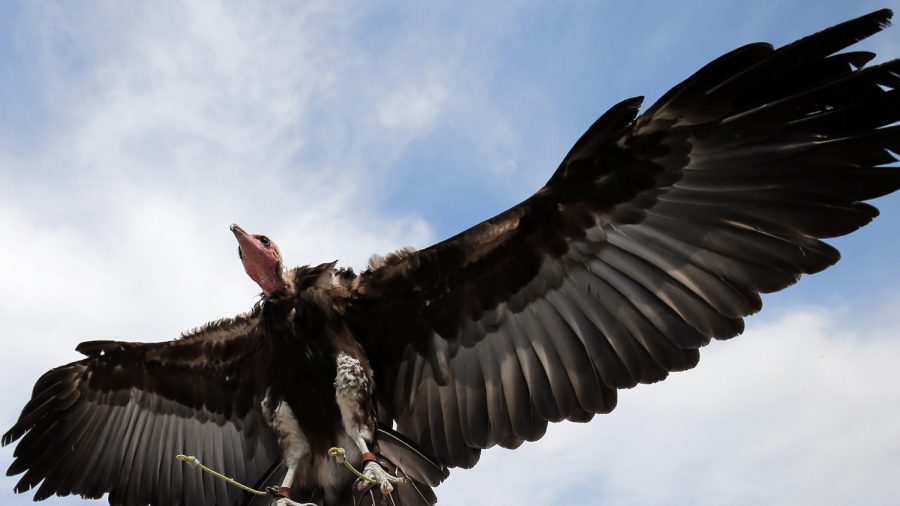One of the largest tragedies for vultures happened in northern Botswana. Over 500 vultures, including critically endangered species, died after falling into a trap: eating poisoned dead elephant remains.
But who would do that? and why?
“A total of 537 vultures and two tawny eagles were found dead at the site. The breakdown included 10 cape vultures, 14 lappet-faced vultures, 468 white-backed vultures, 17 white-headed vultures, and 28 hooded vulture,” reads the press release of the Botswana Government Facebook page.
According to a Conservation Letter from the Wiley Online Library, this should be of concern to us because, “Vultures provide essential ecosystem services, yet they are among the most threatened groups of birds worldwide (Ogada, Keesing et al. 2012). Currently, 69 percent of vultures and condors are listed as threatened or near‐threatened by the IUCN, the majority classed as Endangered or Critically Endangered (BirdLife International 2014). ”
According to VulPro, a Vulture Programme: “It is breeding season so many are adults which means not only are they directly affected but their eggs/chicks have died too and as vultures are monogamous, we have lost those breeding pairs to the wild populations.”
One Facebook user commented on the Botswana press release: “537 plus those breeding so one can add at least another 50 percent bring the total 805 which will include eggs and nestlings.”
One possibility is that poachers did this in order to continue their hunting of elephants and other wild animals without interference from the vultures, who very quickly and accurately spot the corpses of the animals the hunters shoot and start circling in the sky around the carcass, drawing the attention of poacher trackers.
The press release condemned the incident and considers it illegal activity.
“The Department is concerned with the habit of some individuals who deliberately poison animals as this is dangerous and harmful to the environment,” reads the statement. “Furthermore, the public is encouraged to desist from engaging in such illegal acts and report any suspicious activities which may suggest environmental poisoning to the nearest wildlife office or the police.”
However, other Facebook commentators pointed out that Botswana “drooled and slobbered” over the slaughtering of elephants for money, calling the press release “nonsense.”
According to BBC, the area was reportedly sanitized and samples were taken for lab analysis.
“As vultures are late maturing and slow breeders, the magnitude of losing just under 600 vultures in one week is incomprehensible,” said Kerri Wolter, CEO and founder of conservation charity VulPro. “The species cannot withstand these losses and it is impossible to recover the disappearance of these individuals and breeding pairs in our lifetime.”
Botswana caused a dispute over their legalization of elephant hunting last month. One of their arguments was that the boost in the elephant population was affecting farmers’ subsistence and that elephants had been causing human deaths in the countryside.
The world’s largest population of elephants resides in Botswana, at about 130,000.
The elephants that were poisoned in this instance had their tusks removed.
According to BirdLife International, the use of the drug diclofenac is linked to the collapse of vulture population in South Asia.
“In the early 1990s, the Gyps vultures of India and South Asia were among the most abundant large raptors in the world. However, within a decade, the populations of three species, White-rumped Vulture Gyps bengalensis, Indian Vulture G. indicus, and Slender-billed Vulture G. tenuirostris, had declined so precipitously that all three are considered Critically Endangered. Surveys in India show that the country’s Indian and Slender-billed Vulture populations declined by almost 97 percent between 1992 and 2007. White-rumped Vultures fared even worse, dropping by 99.9 percent, to just one thousandth of their 1992 population (Prakash et al. 2007),” states their webpage.
Adding that they are very necessary to maintain the ecosystem: “Vultures provide a crucial ecosystem service through the disposal of livestock carcasses and their loss has had huge socio-economic impacts across the Indian Subcontinent. Without vultures, hundreds of thousands of animal carcasses have gone uneaten—left to rot in the sun, these pose a serious risk to human health. Livestock carcasses provide a potential breeding ground for numerous infectious diseases, including anthrax, and encourage the proliferation of pest species, such as rats.
“Most worryingly, the loss of vultures has resulted in an increase in the number of feral dogs around carcass dumps—the bites of which are the most common cause of human rabies in the region.”

